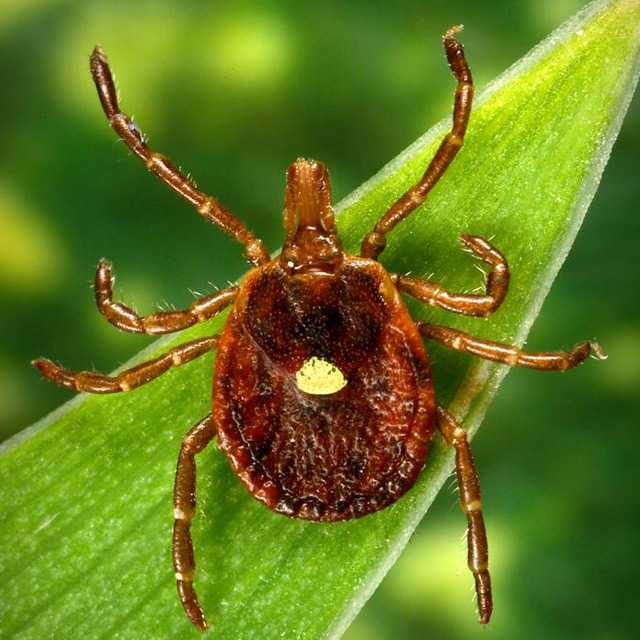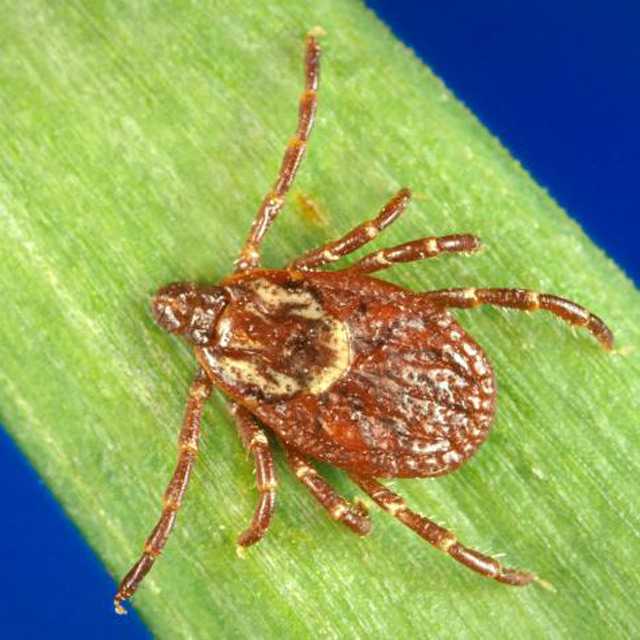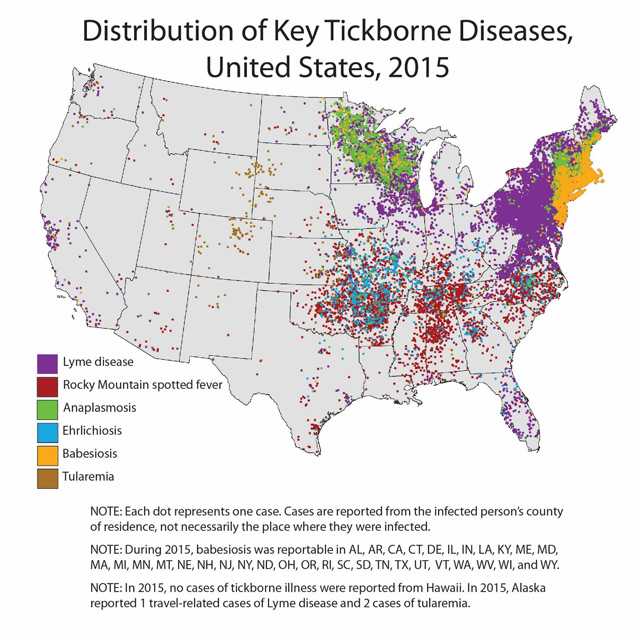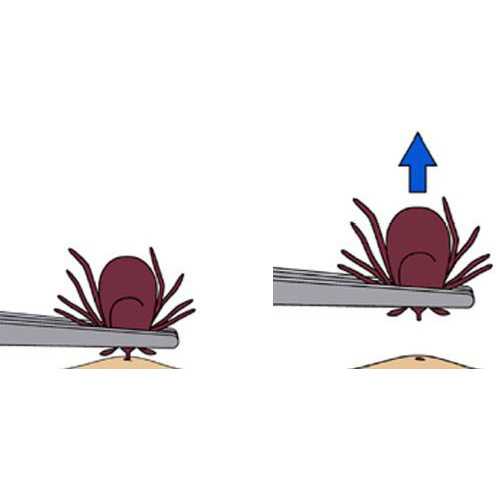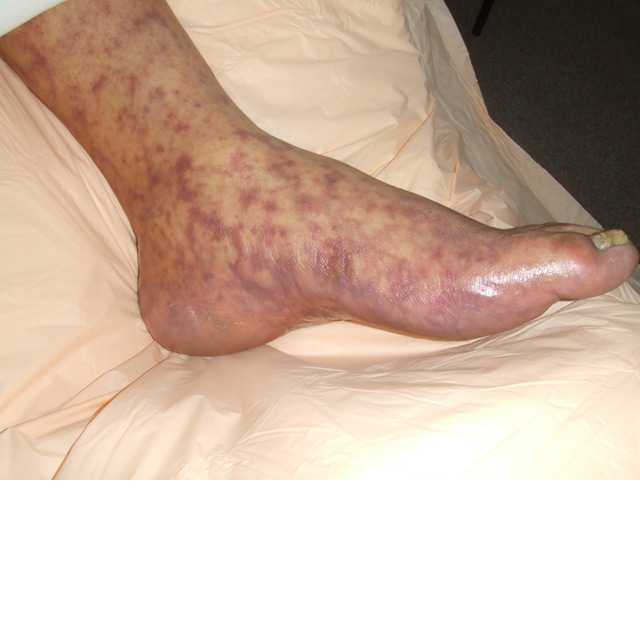Lyme and other tickborne diseases
Prevention is key in fight against tickborne disease
Tickborne diseases are on the rise and prevention should be on everyone’s mind, particularly during the spring, summer, and early-fall when ticks are most active. From May through July, people will get more tick bites and tickborne diseases than any other time of year in the United States. It’s especially important to take steps to protect yourself and your loved ones (including pets) from ticks during this season, as well as any time during warmer months when you’re outside.
Many people do not know they are at risk. Each year, more than 30,000 cases of Lyme disease are reported nationwide, while studies suggest the actual number of people diagnosed with Lyme disease is more likely about 300,000. Despite these numbers, a recent national survey reported that nearly 20 percent of people surveyed in areas where Lyme disease is common were unaware that it was a risk. Additionally, half of people interviewed in another study reported that they did not routinely take steps to protect themselves against tick bites during warm weather.
No sure way to predict how bad a season will be
Preventing Lyme and other tickborne diseases is important every year. Predicting the number of Lyme disease or other tickborne infections, and how an upcoming season will compare to previous years, is complicated. Ticks that spread disease to people can have up to 2 to 3-year lifecycles, and many factors can affect their numbers, including temperature, rainfall, humidity, and the amount of available hosts for the ticks to feed on, such as mice, deer and other animals. In any given year, the number of ticks in an area will be different from region to region, state to state, and even county to county.
Know the risk
What is known is that regardless of the number of ticks this year, people should be aware that ticks could be in the areas where they live, work and play. Everyone should take steps to help protect themselves and their loved ones, including pets, While not all ticks carry the same diseases, ticks can be found in every state. Throughout the continental United States, some diseases occur more frequently in some areas than others:
- Lyme disease risk is focused in the Northeast, mid-Atlantic, and upper Midwest, with pockets of lower risk along the west coast. Nearly 95 percent of Lyme disease cases occur in 14 states: Connecticut, Delaware, Maine, Maryland, Massachusetts, Minnesota, New Hampshire, New Jersey, New York, Pennsylvania, Rhode Island, Vermont, Virginia, and Wisconsin. However, the range of the tick that transmits Lyme disease also is expanding.
- Other less known, but serious tickborne diseases include Rocky Mountain spotted fever, anaplasmosis, ehrlichiosis, Powassan virus, and babesiosis. These diseases tend to be concentrated in specific parts of the country. Babesiosis and anaplasmosis occur in the same areas as Lyme disease—mainly in the Northeast and upper Midwest. More than 60 percent of Rocky Mountain spotted fever cases occur in five states: Arkansas, Missouri, North Carolina, Oklahoma, and Tennessee.
Take steps to protect against ticks
Taking steps to protect yourself and your family from getting a tick bite is the best defense against Lyme disease and other tickborne infections. Whether you’re working, enjoying your yard, camping, hiking, hunting or otherwise in the outdoors, CDC recommends that people:
- Avoid areas with high grass and leaf litter and walk in the center of trails when hiking.
- Use repellent that contains 20 percent or more DEET, picaridin, or IR3535 on exposed skin for protection that lasts several hours.
- Use products that contain permethrin to treat clothing and gear, such as boots, pants, socks and tents or look for clothing pre-treated with permethrin.
- Treat dogs for ticks. Dogs are very susceptible to tick bites and to some tickborne diseases. They may also bring ticks into your home. Tick collars, sprays, shampoos, or monthly “top spot” medications help protect against ticks.
- Bathe or shower as soon as possible after coming indoors to wash off and more easily find crawling ticks before they bite you.
- Conduct a full-body tick check using a hand-held or full-length mirror to view all parts of your body upon returning from tick-infested areas. Parents should help children check thoroughly for ticks. Remove any ticks right away.
- Tumble dry clothes in a dryer on high heat for 10 minutes to kill ticks on dry clothing after you come indoors. If the clothes are damp, additional time may be needed.
Contact Information
CDC Media Relations
(404) 639-3286
media@cdc.gov
Spokespersons
Rebecca Eisen Ph.D.
Biography

“Since the late 1990s, the number of reported cases of Lyme disease in the United States has tripled and the number of counties in the northeastern and upper Midwestern United States that are considered high-risk for Lyme disease has increased by more than 300%. One explanation for this trend is that the ticks that can transmit Lyme disease have expanded their geographic range and are now being found in places they weren’t seen 20 years ago. This makes it more important than ever for people to take steps to prevent tick bites, particularly during the spring and summer when ticks are most active.”
Rebecca Eisen, Ph.D. – Research Biologist, National Center for Emerging and Zoonotic Infectious Diseases, Bacterial Diseases Branch, Division of Vector-Borne Diseases.
Lyle Petersen, MD, MPH
Biography

“Tickborne diseases are on the rise and a public health priority. CDC has been working with state health departments to alert health care providers and the public about these diseases, equip state health laboratories to test for them, and to monitor their occurrence. New environmentally friendly control measures are needed, and we are working with researchers around the country to develop them. Prevention is key and taking steps to protect against tick bites should be on everybody’s radar.”
Lyle R. Petersen, MD, MPH – Director, Division of Vector-Borne Diseases, National Center for Emerging and Zoonotic Infectious Diseases
Chris Paddock, MD, MPHTM
Biography

“In the United States, ticks can spread more than 20 different germs that can make people sick. These tickborne illnesses range from mild to deadly. Some of these illnesses, such as Lyme disease, are common in certain parts of the country. Others, such as Rocky Mountain spotted fever, ehrlichiosis, or Heartland virus infection are less common, but can be fatal. Prevention and early diagnosis are crucial.”
Chris Paddock, MD, MPHTM –
Chief, Reference Diagnostics and Microbiology Activity, Rickettsial Zoonoses Branch, National Center for Emerging and Zoonotic Infectious Diseases
Barbara L. Herwaldt, MD, MPH
Biography

“Babesiosis is a preventable and treatable parasitic disease that can be severe, even life threatening, especially in people who do not have a spleen, who have a weak immune system, or who are elderly. Babesia parasites are tickborne in nature but also can be transmitted by blood transfusion. In the United States, tickborne transmission mainly occurs in parts of the Northeast and upper Midwest, usually peaks during the warm months of the year, and can be prevented by taking steps to avoid tick bites.”
Barbara L. Herwaldt – Medical Epidemiologist, Parasitic Diseases Branch, Division of Parasitic Diseases and Malaria, Center for Global Health
Related Links
- CDC Ticks Portal
- Tickborne Disease Research Collaborations at CDC
- CDC Public Health Grand Rounds: Emerging Tickborne Diseases
- How Many People get Lyme Disease?
- Lyme Disease Frequently Asked Questions
- Lyme Disease Educational Materials
- Hunter Safety Tips
- Diagnosis and Management of Tickborne Rickettsial Diseases: Rocky Mountain Spotted Fever and Other Spotted Fever Group Rickettsioses, Ehrlichioses, and Anaplasmosis — United States
- Research on Doxycycline in Children
- Rocky Mountain spotted fever can be deadly
- Tickborne Diseases of the United States
- Geographic Distribution of Ticks that Bite Humans
- Tick Life Cycle and how Ticks Spread Disease
- Preventing Tick Bites
- Anaplasmosis
- Ehrlichiosis
- Rocky Mountain Spotted Fever
- RMSF is Deadly, yet Preventable
- Prevention and Early Treatment of RMSF in Arizona may Save Millions by Preventing Premature Death and Disability
- Misperceptions Keep Kids from Getting Lifesaving Treatment for Tickborne Diseases
- Printable Babesiosis Resources (fact sheets, tick check cards, poster)
- Doxycycline for Rocky Mountain Spotted Fever: Safe for All Ages
- Recognizing Lyme Carditis
- Tickborne Rickettsial Infections Among Travelers to Africa
- Southern Tick-Associated Rash Illness — When a Bull’s-Eye Rash Isn’t Lyme Disease
- PCR for Diagnosis of Lyme Disease: Is It Useful? An update on testing for Lyme disease is provided in this commentary from the CDC.
- Testing for Lyme Disease: Follow the Steps
- Here Come the Bugs: Protection From Insect and Tick Bites
- Prescribing the Correct Antibiotic for Rocky Mountain Spotted Fever Can Be Lifesaving
- Updated Guidelines for Diagnosis and Management of Tickborne Rickettsial Diseases
- A tick on the move?
- Public Health Grand Rounds Emerging Tickborne Diseases
- 2013 HHS joint webinar! Novel and Emerging Tickborne Diseases – Agents, Clinical Features, and Surveillance
- 2016 HHS joint webinar: Trends in Tickborne Diseases
- Transfusion-Associated Babesiosis in the United States: A Description of Cases
- Page last reviewed: May 4, 2017
- Page last updated: May 4, 2017
- Content source:



 ShareCompartir
ShareCompartir
